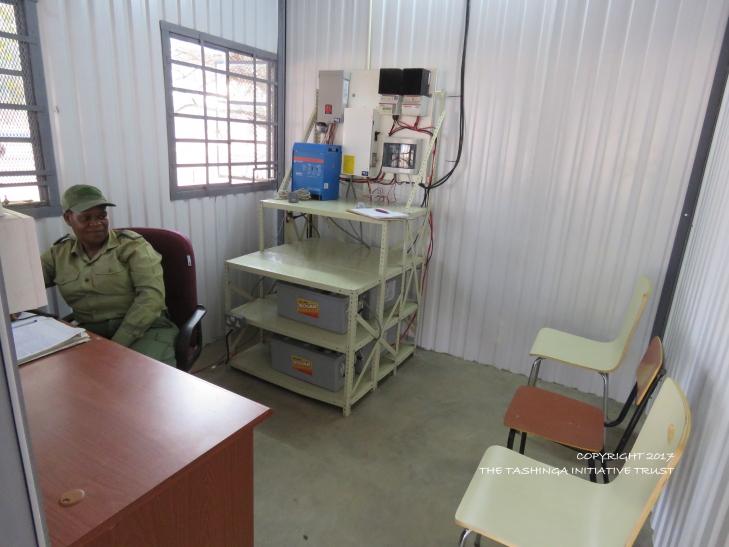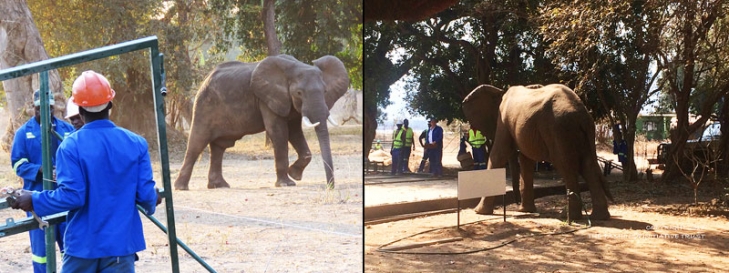Wildlife crime is an extremely complex problem that requires multiple levels of intervention to solve. It is well-known that there are three critical components any anti-poaching strategy depends on: software, hardware and the human beings that operate them. At the Lower Zambezi Anti-Poaching Operations Centre much attention has been paid to promoting a sense of pride and camaraderie among the rangers who are the custodians of the area.
The proposed Lower Zambezi-Mana Pools Transfrontier Conservation Area (TFCA) lies within the Zambezi Valley between Zambia and Zimbabwe. It is a focal point of ecotourism for both Zambia and Zimbabwe. The 17,745km2 Mana Pools National Park component is a World Heritage Site based on its wilderness and beauty, and is home to a wide range of mammals and over 350 bird species. It is also one of the protected areas that make up the mosaic of lower Zambezi protected areas. The name ‘Mana’ means four in the local Shona language and refers to the four large pools formed inland by the Zambezi River. Long Pool, the largest of the four is favoured by large herds of elephant that come from vegetated areas in the south to drink and bathe.

Although this was once a stronghold of the magnificent black rhino and elephant, their numbers have been decimated due to fierce and sustained poaching over many years. As part of a larger strategy to support the governments of Zambia and Zimbabwe with effective joint law enforcement in the Lower Zambezi-Mana Pools TFCA, Peace Parks Foundation recently assisted The Tashinga Initiative with funding to complete the construction of a brand new anti-poaching operations and communications centre in the Mana Pools National Park. The project was also supported by the Convention on International Trade in Endangered Species of Wild Fauna and Flora (CITES) Minimising of Illegal Killing of Elephants and other Endangered Species (MIKES), British Embassy, Beit Trust, and African Bushcamps.

The new operations centre and communications room is a replica of the centres established in the Chewore Wildlife Management Area in June 2017, and as part of the Zambezi Valley Reaction Unit (ZAVARU) base in 2016. Geographically situated right in the middle of these two command and control units, the Mana Pools Anti-poaching Operations Centre now completes a chain of operations centres through the Lower Zambezi Valley. Great care has been taken to ensure that all three units use matching systems and formats, thereby strengthening collaborative anti-poaching operations across the region as a result.
Operational facilities upgraded
In the past, rangers based at Mana Pools gathered on the veranda of an old tumbledown wooden shed, the inside of which served as the Very High Frequency (VHF) radio room. The newly built operations centre consists of an operations room with a space dedicated to the centre’s Commanding Officer, an operations debrief room with a large laminated wall map for easy operational planning, and a solar energy/VHF communications room.
A two-way satellite ground station with a dish antenna (VSAT) provides Internet connectivity. LED (light-emitting diode) lighting was also installed throughout the Mana Pools administrative headquarters and the operations centre which greatly improved night-time operations.

These modern facilities are powered by a solar power system, which was recently upgraded with funding from Peace Parks Foundation to 3.5kW, up from 1kW. The solar installation is enclosed in a solar powered fence which provides security against theft and damage from curious wildlife.

A sense of pride
Wildlife crime is an extremely complex problem that requires multiple levels of intervention to solve. It is well-known that there are three critical components any anti-poaching strategy depends on: software, hardware and the human beings that operate them. At the Lower Zambezi Anti-Poaching Operations Centre much attention has been paid to promoting a sense of pride and camaraderie among the rangers who are the custodians of the area. Recently, funding from Peace Parks Foundation was also used to construct two flagpoles and a podium.
“At first glance, the establishment of these items may appear to be a minor implementation. This is, however, an impactful step towards an enhanced level of pride, responsibility and accountability by Zimbabwe Park and Wildlife Management Authority (ZPWMA) Rangers in their safeguarding of the integrity of one of the Lower Zambezi Valley’s mosaics of protected areas,” says Lynne Taylor, founder and executive director Tashinga Initiative Trust. “Providing Mana Pools rangers with the infrastructure and opportunity to salute the flag of their country and to help each one of them build on their sense of pride is probably one of the most effective anti-poaching tools that can be used to protect wildlife.”

Plans are also in process to establish a parade ground immediately in front of the Operations Centre. “This will further enhance professionalism between the rangers as it will offer them an appropriate space where they can display their parade ground skills,” says Taylor.
The recent upgrades, as well as installations planned for the near future, will significantly enhance the capacity of the Mana Pools anti-poaching ranger units by providing a space for anti-poaching drills, enhanced discipline, self-awareness and, perhaps most importantly, collaboration between the various units and centres.
All photos provided by The Tashinga Initiative





